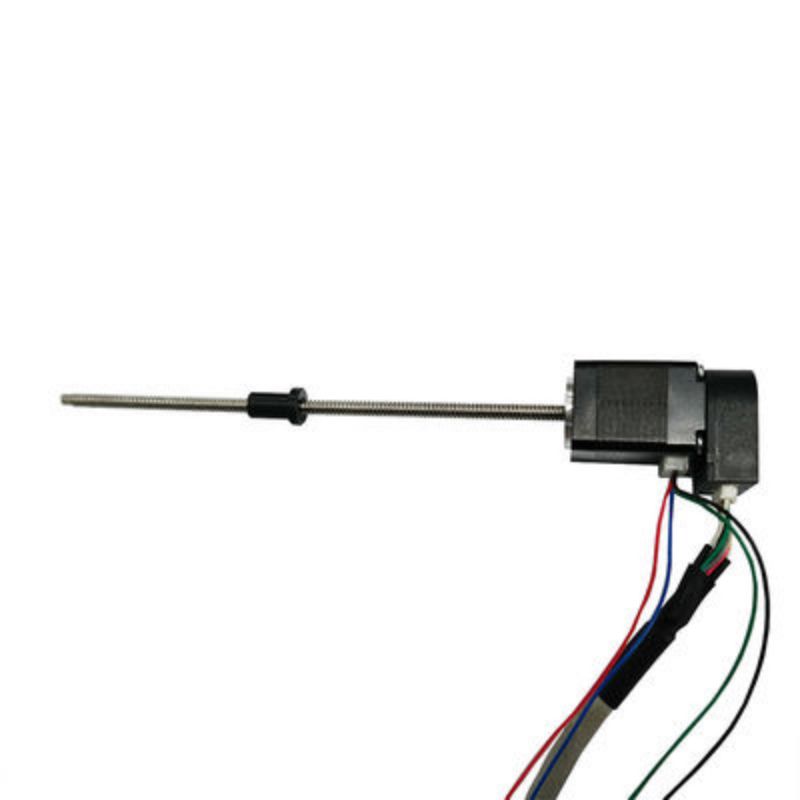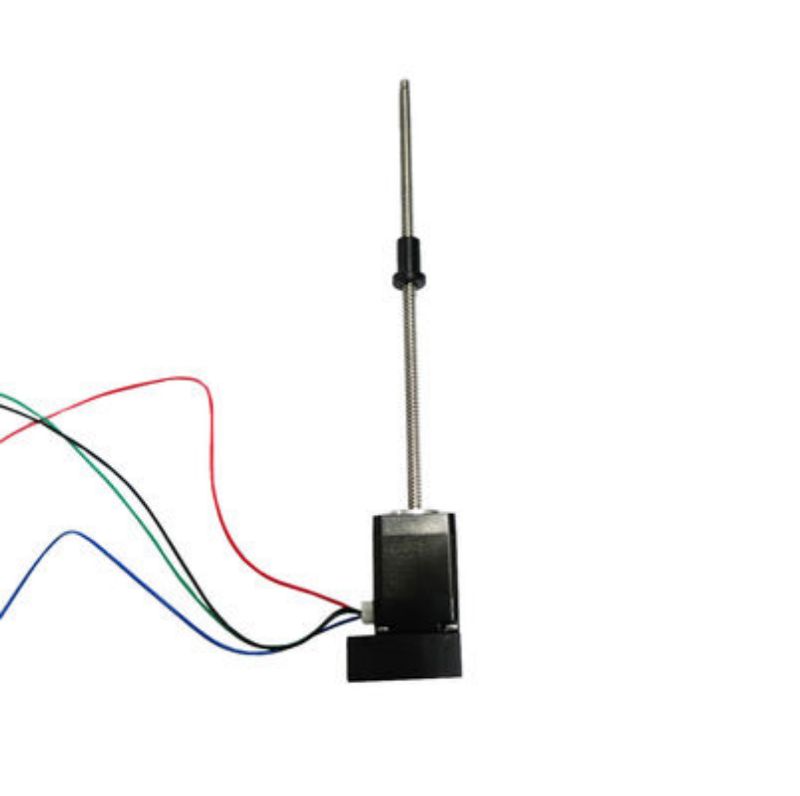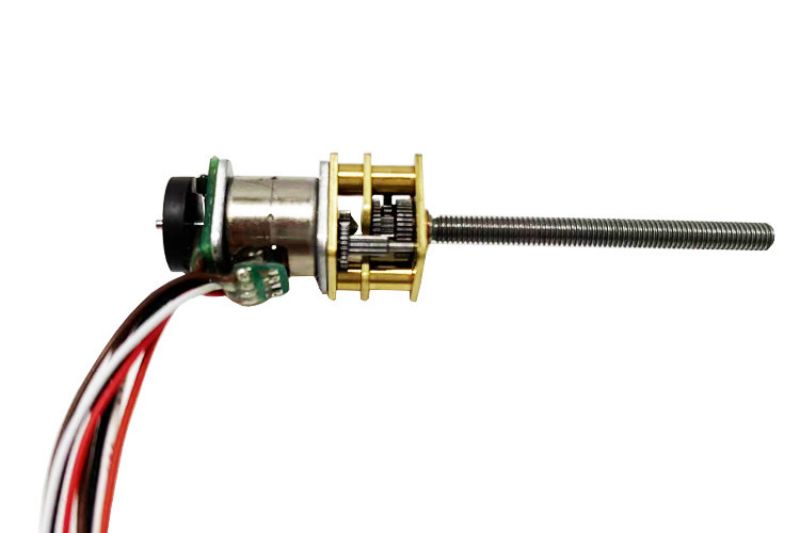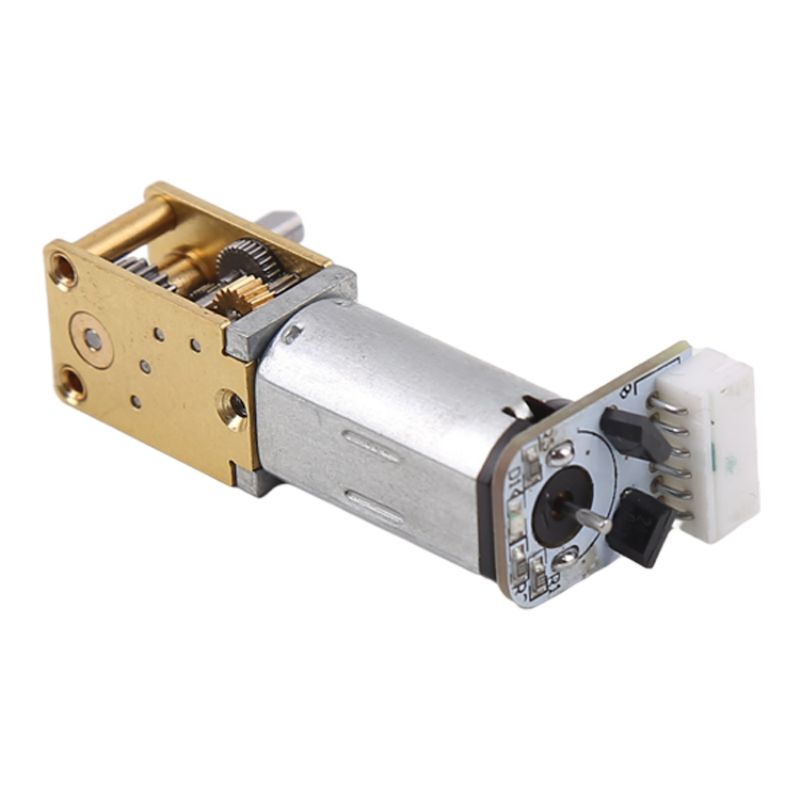What is an encoder?
During motor operation, real-time monitoring of parameters such as current, rotational speed, and the relative position of the circumferential direction of the rotating shaft determines the status of the motor body and the equipment being towed, and furthermore, real-time control of the motor and the equipment's operating conditions, thus realising servoing, speed regulation, and many other specific functions.
Here, the application of encoder as the front-end measurement element not only greatly simplifies the measurement system, but also precise, reliable and powerful.
Encoder is a rotary sensor that converts the position and displacement of rotating parts into a series of digital pulse signals, which are collected and processed by the control system to issue a series of commands to adjust and change the operating status of the equipment. If the encoder is combined with a gear bar or screw screw, it can also be used to measure the physical quantities of position and displacement of linear moving parts.
Basic classification of encoder
Encoder is a mechanical and electronic close combination of precision measuring devices, the signal or data for coding, conversion, for communication, transmission and storage of signal data.
The encoder is a precision measuring device that combines mechanical and electronic components to encode, convert, communicate, transmit and store signals and data. According to different characteristics, encoder classification is as follows: code disc and code scale: linear displacement into electrical signals called code scale encoder, angular displacement into telecommunications for the code disc, - incremental encoder: to provide position, angle and number of laps, etc., to the number of pulses per turn to define the rate of separate. -Absolute encoder: Provide information such as position, angle and number of revolutions in angular increments, each angular increment is given a unique code.
-Hybrid absolute encoders: Hybrid absolute encoders output two sets of information: one set of information is used to detect the position of the magnetic poles, with the function of absolute information; the other set is exactly the same as the output information of incremental encoders.
Commonly used encoders for motors
Incremental encoder
Directly using the principle of photoelectric conversion to output three sets of square wave pulses A, B and Z. A, B two sets of pulses phase difference of 90o, can easily determine the direction of rotation; Z-phase every turn a pulse, used for reference point positioning. Advantages: simple principle of construction, the average mechanical life of tens of thousands of hours or more, strong anti-interference ability, high reliability, suitable for long-distance transmission. Disadvantages: unable to output the absolute position information of shaft rotation.
Absolute encoders
Direct output digital sensor, sensor circular code disc along the radial direction of a number of concentric code channels, each channel by the light-transparent and light-impermeable sectors between the composition of the number of adjacent code channel sectors is a double relationship between the number of code channels on the code disc is the number of binary digits on the number of code channels is the number of bits of its code disc, in the code disc of the side of the light source, the other side of the corresponding to each code channel there is a light-sensitive element; when the code disc is in a different position, the light-sensitive element according to the light or not convert the corresponding level signal to form a binary number. When the code disc is in different positions, each photosensitive element converts the corresponding level signal according to whether it is illuminated or not to form a binary number.
This type of encoder is characterised by the fact that it does not require a counter and a fixed digital code corresponding to the position can be read out at any position of the rotating shaft. Obviously, the more the code channel, the higher the resolution, for an encoder with N-bit binary resolution, the code disc must have N barcode channel. At present, there are 16-bit absolute encoder products.
Encoder working principle
By a centre with the shaft of the photoelectric code plate, which has a ring through the dark lines, there are photoelectric transmitter and receiver devices to read, to obtain four sets of sine wave signals combined into A, B, C, D, each sine wave with a phase difference of 90 degrees (relative to a circumferential wave for the 360 degree), the C, D signal inversion, superimposed on the A, B two-phase, which can be enhanced to stabilise the signal; and the other every turn to output a Z-phase pulse on behalf of the zero position Reference position.
As A, B two phase difference of 90 degrees, can be compared with the A phase in the front or B phase in the front, in order to discern the encoder positive and reverse rotation, through the zero pulse, you can get the encoder's zero reference position.
Encoder disc material has glass, metal, plastic, glass disc is deposited in the glass on a very thin engraved line, its thermal stability is good, high precision, metal disc directly to pass and not pass the engraved line, not fragile, but because of a certain thickness of the metal, the precision is limited, and its thermal stability will be worse than that of the glass of an order of magnitude, the plastic disc is economical, its cost is low, but the accuracy, thermal stability, life expectancy is worse. Plastic discs are economical, but the accuracy, thermal stability, and life span are worse.
Resolution - encoder to provide how many through or dark lines per 360 degrees of rotation is called the resolution, also known as the resolution of the index, or directly called how many lines, generally 5 ~ 10,000 lines per revolution index.
Position Measurement and Feedback Control Principles
Encoders occupy an extremely important position in lifts, machine tools, material processing, motor feedback systems and measurement and control equipment. Encoders use optical gratings and infrared light sources to convert optical signals into TTL (HTL) electrical signals through a receiver, which visually reflects the rotational angle and position of the motor by analysing the frequency of the TTL level and the number of high levels.
As the angle and position can be measured accurately, it is possible to form a closed-loop control system with the encoder and the inverter to make the control even more precise, which is why lifts, machine tools, etc. can be used so accurately.
Summary
In summary, we understand that the encoder is divided into incremental and absolute two kinds according to the structure, they are also other signals, such as optical signals, into electrical signals that can be analysed and controlled. And we live in the common lift, machine tools are just based on the precise regulation of the motor, through the feedback of the electrical signal closed-loop control, encoder with frequency converter is also a matter of course to achieve precise control.
Post time: Feb-23-2024




